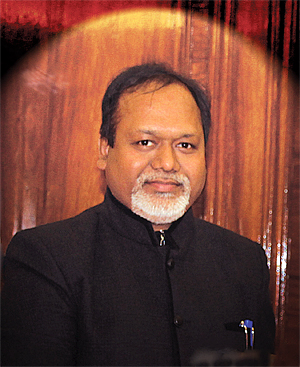INDIAN ARMED FORCES CHIEFS ON OUR RELENTLESS AND FOCUSED PUBLISHING EFFORTS

The insightful articles, inspiring narrations and analytical perspectives presented by the Editorial Team, establish an alluring connect with the reader. My compliments and best wishes to SP Guide Publications.

"Over the past 60 years, the growth of SP Guide Publications has mirrored the rising stature of Indian Navy. Its well-researched and informative magazines on Defence and Aerospace sector have served to shape an educated opinion of our military personnel, policy makers and the public alike. I wish SP's Publication team continued success, fair winds and following seas in all future endeavour!"

Since, its inception in 1964, SP Guide Publications has consistently demonstrated commitment to high-quality journalism in the aerospace and defence sectors, earning a well-deserved reputation as Asia's largest media house in this domain. I wish SP Guide Publications continued success in its pursuit of excellence.
A Word from Editor-in-Chief
With over 500 companies both from India and abroad participating, Defexpo 2014 ought to provide opportunities for the original equipment manufacturers to showcase the latest technologies and products as well as exploit potential business opportunities.

The leading players in the global defence and aerospace industry ought to be keenly looking forward to a fruitful and rewarding participation in Defexpo India 2014, the eighth in the series of biennial Land, Naval and Internal Homeland Security Systems Exhibition being organised by the Defence Exhibition Organisation, Ministry of Defence, at Pragati Maidan in New Delhi from February 6 to 9. With over 500 companies both from India and abroad participating, Defexpo 2014 ought to provide opportunities for the original equipment manufacturers to showcase the latest technologies and products as well as exploit potential business opportunities. While some deals may be concluded at the venue, the more important feature of the event will be the opportunities it will provide through business to business meetings for wide exposure to the global industry, initiation of dialogue for new projects, forging of joint ventures and exchange of professional information.
With India remaining as the largest importer of military hardware, the global defence and aerospace industry continues to look upon the Indian market with high level of enthusiasm despite the slowdown in procurements on account of cancellation of tenders, blacklisting of companies by the Ministry of Defence and paralysis in decision-making at the level of the government. The optimism is clearly visible in the several major inductions in the recent past and repeat orders for more, such as the additional six C-130J Super Hercules aircraft. However, decisions to cancel contracts or blacklist firms by the Ministry in the ultimate analysis turn out to be counterproductive as they retard the pace of the badly needed modernisation of the Indian armed forces as well as deny the indigenous defence industry the opportunity for technological upgrade.
This issue of SP’s Aviation reviews the state of the various types of aircraft fleets including fixed- and rotary-wing as well as unmanned aerial vehicles in the Indian armed forces. While the transport fleet has been reequipped with modern platforms and more are on the way, the helicopter fleet has had another setback on account of the cancellation for the second time of the tender for 197 light utility helicopters (LUH). The indigenous equivalent of the LUH to be produced by the Indian aerospace major the Hindustan Aeronautics Ltd is under development and the time frame for its operationalisation cannot at this stage be predicted with any degree of certainty.
The agonising delay in the finalisation of the tender for the 126 medium multi-role combat aircraft (MMRCA) continues to plague the Indian Air Force (IAF). This would be particularly worrisome for the IAF in the context of the increasing belligerence of our Northern neighbour and the likelihood of further destabilisation of the Western borders especially in J&K following the withdrawal of US and NATO forces from Afghanistan.
The civil aviation establishment in India has also been through convulsions and changes in recent times. The Federal Aviation Administration (FAA), the US regulatory agency, has downgraded India’s aviation safety ranking to Category II, pointing at the gross inadequacies in regulatory and safety oversight of the civil aviation industry. The implications of this downgrade are serious for Indian carriers operating to the US as the restrictions imposed on them consequent to this step by the FAA will undoubtedly be financially crippling. It will now devolve upon Prabhat Kumar, the new incumbent as the Director General of Civil Aviation (DGCA), to restore the erstwhile status as early as possible.
Please do visit us at Hall 14 at the Defexpo 2014. Wishing you happy landings!





